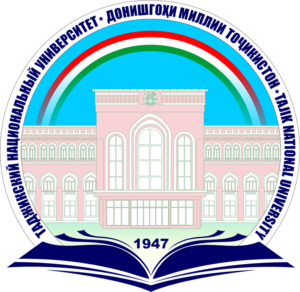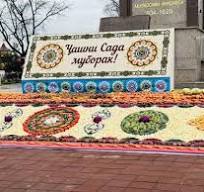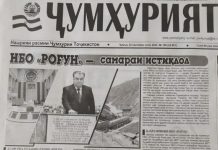The Founder of Peace and National Unity, Leader of the Nation, President of the Republic of Tajikistan Emomali Rakhmon in his message to Majlisi Oli of the Republic of Tajikistan marked: “The Tajik nation, having rich and ancient traditions, customs and culture, has made a worthy contribution to the development of world civilization. Our good traditions and national holidays, such as Navruz, Mehrgon, Sada, have played a huge role in the promotion of morality and a creative spiritual world over a long historical period”. It is a matter of pride that the Leader of the Nation declared them official national holidays, which are celebrated with a special, original celebration. But there were some periods when celebrating the holiday was banned/. It is connected with the ruling period of some kings. As an example after the XII-XIII centuries. under the influence of theologians, the celebration of the Sada was canceled by the Shahs and it turned into a national holiday and has reached our days in the form of festivities.
Nowadays, the holiday is celebrated throughout Tajikistan, as well as in Iran, Afghanistan, India, Pakistan, Turkey, Uzbekistan and other countries. The Feast of Sada was well known starting from Aryans to the period of the Ghaznavids and Seljuks and in some regions before the Mongol conquest.
Sada is one of the ancient holidays of the Aryan peoples. Thanks to the state independence of the Republic of Tajikistan due to the initiative of the Founder of Peace and National Unity, the Leader of the Nation honorable President of Tajikistan Emomali Rahmon Sada Holiday has been revived and is widely celebrated throughout the republic every year at the end of January, It is officially celebrated on January 30 in Tajikistan. This event became official. The main and important thing of Sada holiday is the victory of light above darkness, warmth over cold and good over evil. In the courtyard and among the people it was celebrated along with the Nаwruz, Mehrgon.
The stories say that the burning the fire is a
symbol for coming spring, field works and changing the weather to warm and
light. It is a good sign for peasants to start preparation for field work
and gardening. On these days of the
holiday, the farmers prepare seeds, agricultural equipment. The
holiday is celebrated by burning fires. During the celebration, people read
excerpts from the Avesta, distributed food and drinks. The Persian thinker Abu
Rayhan Biruni described the passage of this holiday: “The bonfire had to burn
all night. In the morning of the next day, women came to the fire and took a
few more burning branches to their home so that in the end every house was
consecrated by holy fire”. In the days
of celebration of Sada, the people distributed food to remember the memory of died.
The
word “Sada” means “hundred” consisting of
50 nights and 50 days before coming
another holiday called Navruz. Sada is
the celebration of the leaving winter and coming spring. It is one of the oldest seasonal celebrations
of Aryan people. It is considered to be the most important Iranian and Tajik
winter festival. This holiday is a memory of the period of the Aryans,
which in historical and artistic sources is attributed to the historical hero
Khushang. From
the legend comes that King Hushang, the 2nd king of the mythological Pishdadian
dynasty, established the Sada tradition. The legend says one day Hushang was
climbing a mountain when all of a sudden he saw a snake and wanted to hit it
with a stone. When he threw the stone, it fell on another stone and since they
were both flint stones, fire broke out and the snake escaped. This way he
discovered how to light a fire. Hushang cheered up and praised God
who revealed to him the secret of lighting a fire. Until then, the
people did not know the method of kindling
fire. Khushang and his relatives rejoiced in the secret of kindling fire and
considered it a divine blessing. Then he announced:
“This is a light from God. So we must admire it”.
The description of the Sada Holiday in the period of Samanid and Ghaznavid rule can be seen in historical and artistic works, especially in the Qasidas. Abulkosim Firdavsi in his “Shahname” says about the foundation of the Sada as the following:
That night he made a mighty blaze, he stood
Around it with his men and held the feast
Called Sada; that bright festival remaineth
(A.G.Warner, E.Warner. The “Shahnama” of Firdausi)
The Republic of Tajikistan is the only country in which the Mehrgon and Sada holidays have certain days of celebration. It is a matter of pride that these celebrations have been included in the list of the Intangible Heritage of Humanity, once again introducing the world to the rich and colorful history of the Tajik nation.
It worth noting that during the 18th session of the Intergovernmental Committee for the Safeguarding of the Intangible Cultural Heritage of UNESCO, the joint nomination of the Republic of Tajikistan and the Islamic Republic of Iran “Sada Festival” was included in the Register of the Intangible Heritage of Humanity.
Key words: Sada, Mehrgon, Samanid, Ghaznavid, celebration, distribute,official.
Annotation
The article is devoted to the ancient history of celebrating the Sada holiday. The author produces information about the festival and the way how the people celebrate this ancient holiday relying on historical events. The article says about the efforts and attention of our government and the President of the country to a huge role of our rich and ancient traditions, customs and culture in the promotion of morality and a creative spiritual world over a long historical period.
Latofat Nazarova
The sources used:







